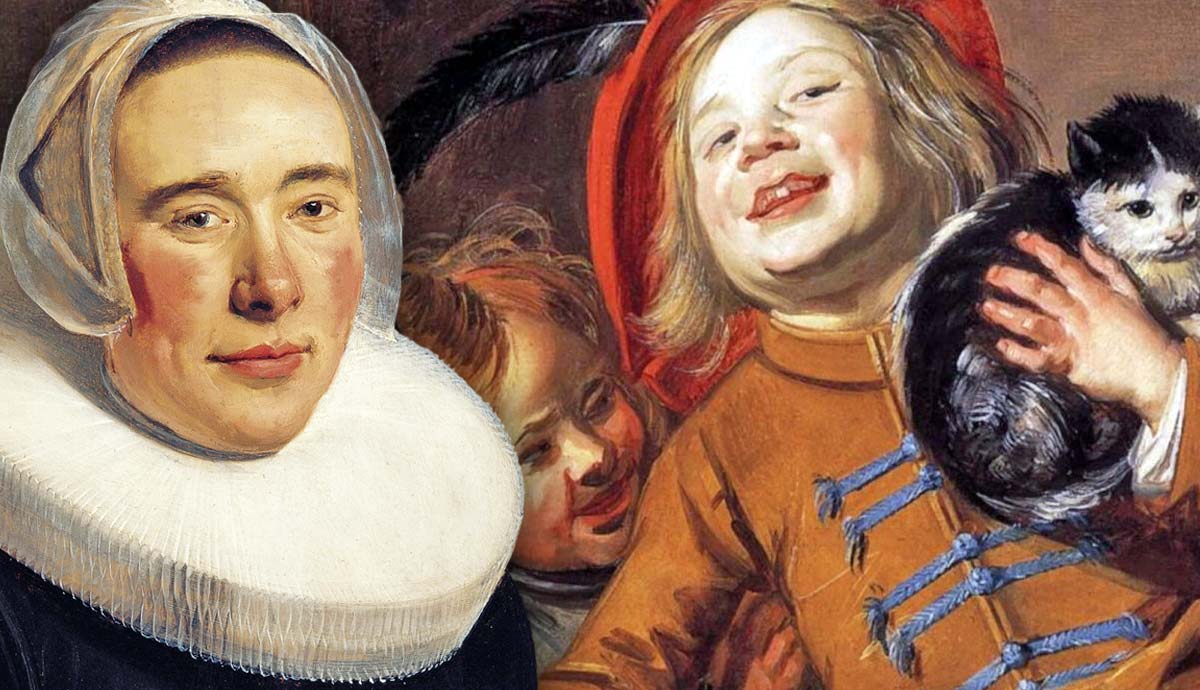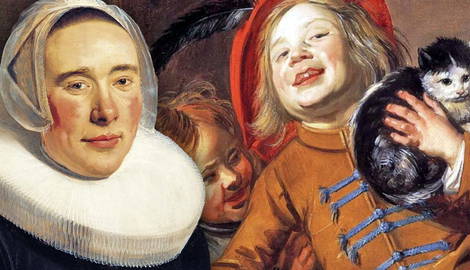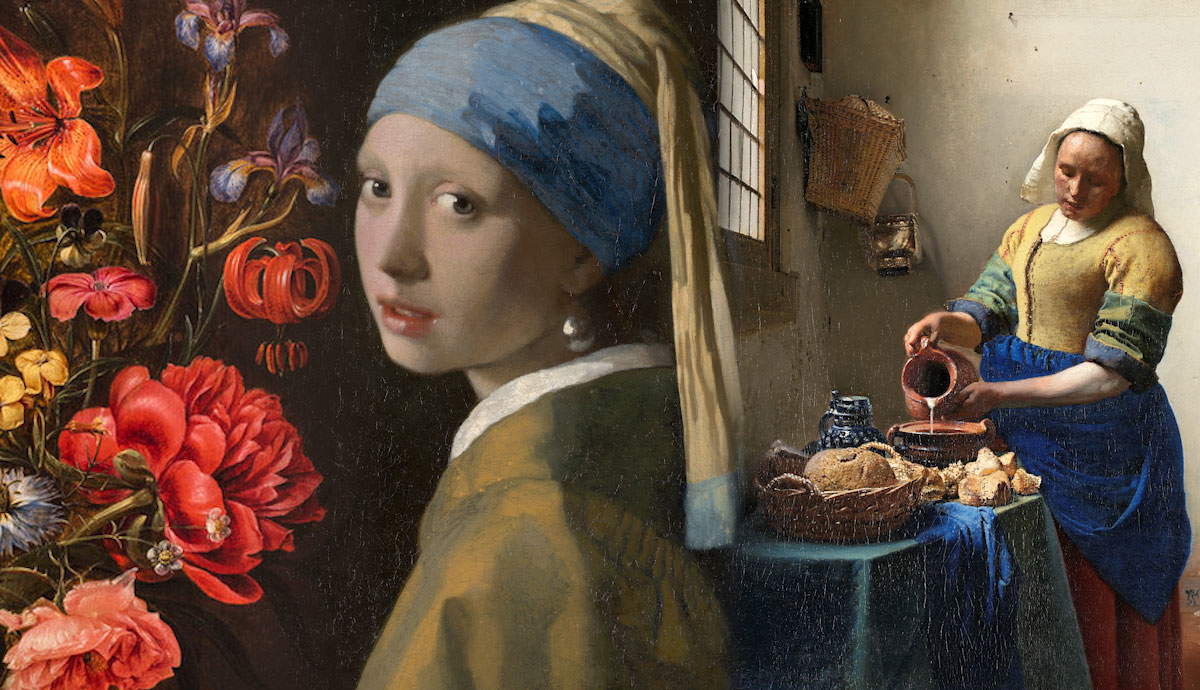
Judith Leyster was a painter of great talent. Her gender, however, left her largely unknown. Her works have been misattributed to Frans Hals (1582-1666) despite being signed. The second wave of feminism transformed the methods of art history and put Leyster on the map. Now her works are sought after by museums and collectors and she is regarded as one of the masters of the so-called Dutch Golden Age.
Becoming Judith Leyster

Judith Leyster, like many other artists from the 17th century, was of Flemish origin. The religious tensions in Antwerp made numerous artists move to the Northern Low Countries, especially in Holland. The most prosperous towns of the province were Amsterdam and Haarlem. Judith’s family was reformed and found comfort in Haarlem. Her father established a brewery and called it Leijster (Pole Star). At that time, it was not uncommon to change your last name to match the name of your business. And so the last name of the family became Leijster or Leyster.
While Judith was not born under the name of Leyster, she avidly instrumented it later in her career. She loved her adopted last name so much that she even included it in her signature. Next to her monogram ‘JL’ she sometimes added a star. By the time Judith was born in 1609 as the eighth child of nine, her family was enjoying plentiful financial and social privileges. However, Jan Willemssen, her father, did not manage to lead a successful business. By 1625, he was forced to declare bankruptcy and leave Haarlem.
Training and Apprenticeship in Haarlem

Judith Leyster, therefore, is an exception to the norm. The majority of female artists working between the 1500s and 1800s generally came from a family of artists. Artemisia Gentileschi, Catharina van Hemessen, and Michaelina Wautier were trained by their fathers and, respectively, brothers.
While sources are not generous in telling us where Judith Leyster had her apprenticeship, there are two plausible scenarios. At the time when she was of age, Pieter De Grebber (1600-1652), a sought-after portrait painter from Haarlem, was running a successful workshop. Interestingly, one of his pupils was his daughter, Maria. The fact that Maria pursued such a career allows us to speculate that perhaps such a master painter was more prone to accepting a young girl as an apprentice.
Another running speculation is that she trained with Frans Hals, which would be accounted for by the stylistic affinity between Leyster’s paintings and the portraits made by Hals. Moreover, her preference for genre painting and portraiture would be easier to explain.
In early seventeenth-century Haarlem, specializing in portraiture was a leeway to obtaining commissions from the higher echelons of society. While such a pedigree ensured heftier payment, producing genre paintings for the art market was a safe way of selling ready-made, small canvases. Judith was a clever strategist who was very determined to make a living through her craft.
Leyster’s Training and Influences

Most of Leyster’s paintings date from a rather short period. The years from 1629 to 1636 were her most productive ones. In almost a decade, Leyster became a member of the painter’s guild, established her own workshop with hired pupils, and eventually married a fellow Haarlem painter, Jan Miense Molenaer.
For Judith, the safely attributed works count up to, more or less, thirty pieces. Scholars concerned with her oeuvre argue about the exact count and her workshop enterprises open the way for endless speculation.
Her earliest dated paintings are dated to 1629. The Rijksmuseum genre paintings attest to another line of inspiration in her oeuvre: that of Utrecht Caravaggisti. Hals himself was influenced by the genre depictions of musicians or actors that Gerard van Honthorst and Dirck van Baburen started making in the early 1620s.

Leyster’s Serenade was in fact attributed to Hals and his son, Jan. It wasn’t until 1893 that art historians took a closer look at the signature and read the initials correctly. In spite of the misattribution and the stylistic affinity with Hals’ genre paintings, Leyster did create a unique composition. While the theatrical element of the painting is more closely related to Honthorst, Leyster played with light, perspective, and the viewer’s experience. The short and pasty brushstrokes and the close-up position devise a lively scene, and the viewer has a similar experience to that of watching a live performance in front of a stage. One can almost hear the rustle of the scene and the tunes of the lute.
What Did Leyster Paint Best?

Judith Leyster’s corpus of paintings largely consists of genre depictions. A few portraits, still-lifes, and botanical illustrations add further dimensions to her oeuvre. Her subjects are worldly: backgammon players, mothers sewing, revelers celebrating, and men trying to seduce women.
What attests to her preferred specialization is her self-portrait. In this painting—which historians speculate was made either as the masterwork that earned her the membership of the Haarlem Saint Luke Guild or it was produced as a piece made for self-promotion—Judith portrays herself while at work.
She is wearing expensive clothing and shows a laid-back attitude. If the project was meant to present her professional persona, we see that Leyster paints with ease and spontaneity in between other daily chores and prefers to conceive human characters that reflect her mirth.
Leyster’s most relevant contribution to seventeenth-century Dutch painting was her idiosyncratic use of elements of genre combined with portraiture. While she may have not been the first artist to blur the lines between the two categories, her lively depictions of children and mothers and jolly companies had an impact on this transformation.
Genre scenes in Dutch art were generally moralizing, stressing the consequences of human vices and the fleeting nature of life. Instead of commenting on human behavior, Leyster chose to observe its avatars and describe its various expressions. She is therefore a talented portratist not only of the human figure but of humanity in general.
Marriage & Co. Family Business as a Career in 17th-Century Holland

The usual narrative on Leyster’s career is that it stopped short. Read within a gendered frame, it is natural to assume that life-altering events like marriage transformed a woman’s life (and career) completely. Judith married a fellow painter working in Haarlem, Jan Miense Molenaer. While he does not rank among the most beloved Dutch artists of the seventeenth century, his career was a successful one. He specialized in genre painting. As marriage was often a business association, both saw the advantages of joining forces in order to attain the social and financial stand they aspired to.
Since most of Leyster’s paintings date from before the marriage and her childbearing period, some assume that she renounced painting. However, these are only speculations.
What is more plausible is that Leyster became more involved in the art trading side of Molenaer’s business and possibly assisted him as a studio partner. Indeed, juggling the family enterprise and five children did not leave Leyster much time to develop her craft. The only paintings that were produced after the union took place are a botanical illustration of a tulip from 1643 and a portrait from 1652.
Judith Leyster in the History of Dutch Painting

An inventory of the estate of Leyster and her husband, issued upon her demise, lists two marriage portraits of Judith and Jan painted by Frans Hals, the most prominent portraitist from Haarlem. The portraits have been lost without a trace since the death of Leyster. Their disappearance gave birth to different anecdotes and rumors. Such is the story of Leyster’s legal quarrel with Frans Hals that presumably planted the seed of discord and the disappearance of the portraits, which were said to be found in the attic with no frames.

The incident was prompted by one of Leyster’s students, who bypassed guild regulations and left her workshop with no notice after only four days of apprenticeship. Destination? Frans Hals’ atelier. Judith astutely pursued legal action and demanded the family of the boy pay her the studio admission for a quarter of a year. Leyster won the case: the family of the boy paid her part of the demanded sum and he was allowed to leave her workshop to seek training elsewhere. Hals was, however, prohibited from accepting him as an apprentice and was fined for taking in a student without going through the guild’s procedure first.
An incident like this is often read in terms of her sharp and judicious character, which propelled her to be an esteemed artist in a men’s world.
Re-Defining Judith Leyster Within The Canon of Dutch Painting

Leyster’s repertoire is therefore nearly impossible to estimate. The growing interest in female Old Masters in the art market is creating a problematic trend of commercial attribution. While a poorly executed painting done in the style of Hals or Molenaer cannot sell for much, associating it with the brand of Judith Leyster ensures more traction. There are pros and cons to this. On the one hand, museums dedicate a growing number of programs to promoting female artists to the public. On the other hand, art market speculation determines a dubious segment of never-ending possible paintings by Leyster. Despite having documented paintings of outstanding quality and poise, there is a parallel market of Leyster’s alleged works that do not do her name favor.










